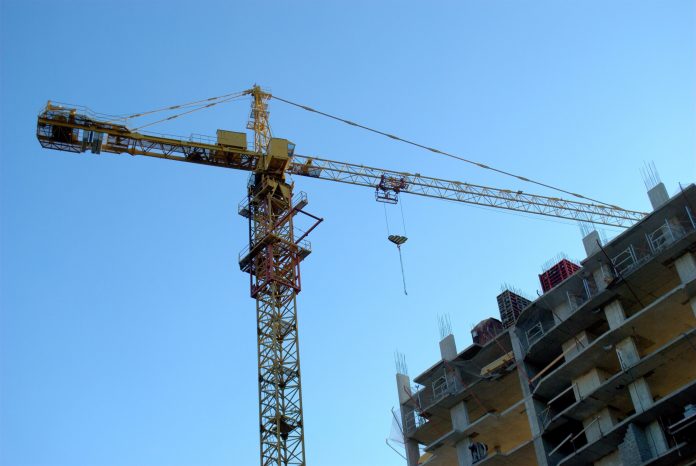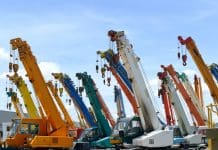In the face of COVID-19 site closures, the Construction Plant-hire Association (CPA) has released guidance on how tower crane owners and users should leave cranes out of service for potentially lengthy periods
As the coronavirus outbreak leads to several construction site closures, the Construction Plant-hire Association’s (CPA) Tower Crane Interest Group (TCIG) has issued advice to tower crane owners and users relating to how tower cranes should be left out of service for potentially lengthy periods of time.
The new tower crane safety alert states that failure to take the crane out of service in line with manufacturer’s instructions and to periodically inspect the crane whilst out of service could result in very high wind loadings being placed on the crane with the consequential collapse of the jib or the whole crane.
How to leave tower cranes out of service for long periods of time:
- Ensure that the most up to date information for taking the crane out of service is obtained from the manufacturer or supplier of the tower crane for the specific make, model and configuration of crane. This should be checked against the information recorded in the project lift plan.
- From the information provided by the crane manufacturer or supplier verify that the crane has been left in the correct out of service condition.
- With luffing cranes, it is strongly advised that the jib is parked at the maximum radius possible allowing for surrounding obstacles rather than at the minimum out of service radius specified by the manufacturer.
- With a saddle jib crane, park the trolley at the manufacturers recommended position along the jib.
- Check the function of the free slew mechanism and report any fault to the owners’ or suppliers’ service department immediately. Leave the crane in free slew.
- Make note of the direction of the tower crane jib in relation to the wind direction. When the jib is in free slew it should follow any change in wind direction. If the jib remains in the same position when the wind direction changes, contact the crane supplier service department immediately.
- Check the integrity of fixings of any wind sail or advertising boards.
- Secure any intruder prevention barriers.
- Hand all keys to the designated project management representative and inform the crane owners service department of the key holder’s contact details.
- Put in place procedures to ensure that the base of cranes is kept free from surface water that may accumulate.
- Put in place arrangements for the crane to be periodically inspected by a competent person. If the crane driver is not available, then arrangements should be made with the crane supplier to undertake the inspections.
It is recommended that a thorough examination regime for the crane is maintained whilst it remains out of service.
Prior to the crane re-entering service, it should be inspected by the crane supplier.
You can access the tower crane safety alert here.


















